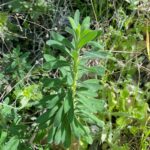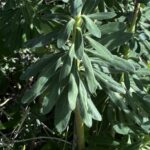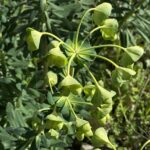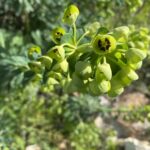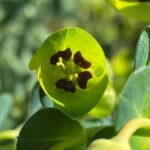Ευφορβία του Τόμσον
Etymology of Euphorbia thompsonii: The genus was named for "Euphorbus", a Greek physician to Juba II - King of Mauretania of Numibia. In 12 BC, Juba named a species of this genus after his physician. Euphorbus's name derives from "εὖ" [ev], meaning "good, correctly" and "φορβή" [forvi], meaning "food", thus giving the meaning somehow "provides a good meal from consumption". Euphorbus name's etymology has probably nothing to do with the naming of that Euphorbia species as the genus's plants are poisonous and non-edible. In 1753, Carolus Linnaeus, the great taxonomist, assigned the name Euphorbia, to the entire genus. The epithet "thompsonii" is a tribute to the English botanist Harold Stuart Thompson (1870-1940), a plant collector who in 1906 published "The flora of Cyprus".
There are at least 32 kinds (species and subspecies) of the Euphorbia genus in the wild Cypriot habitat.
Euphorbia thompsonii is an endangered plant, encountered in western Cyprus, but it is very common in the territory of the village Pano Arodes, Pafos district, Akamas region. It is a near-endemic plant as it appears only in Cyprus and Turkey. It grows at an altitude between 50–1675 metres. Its flowering period is between January and May.


